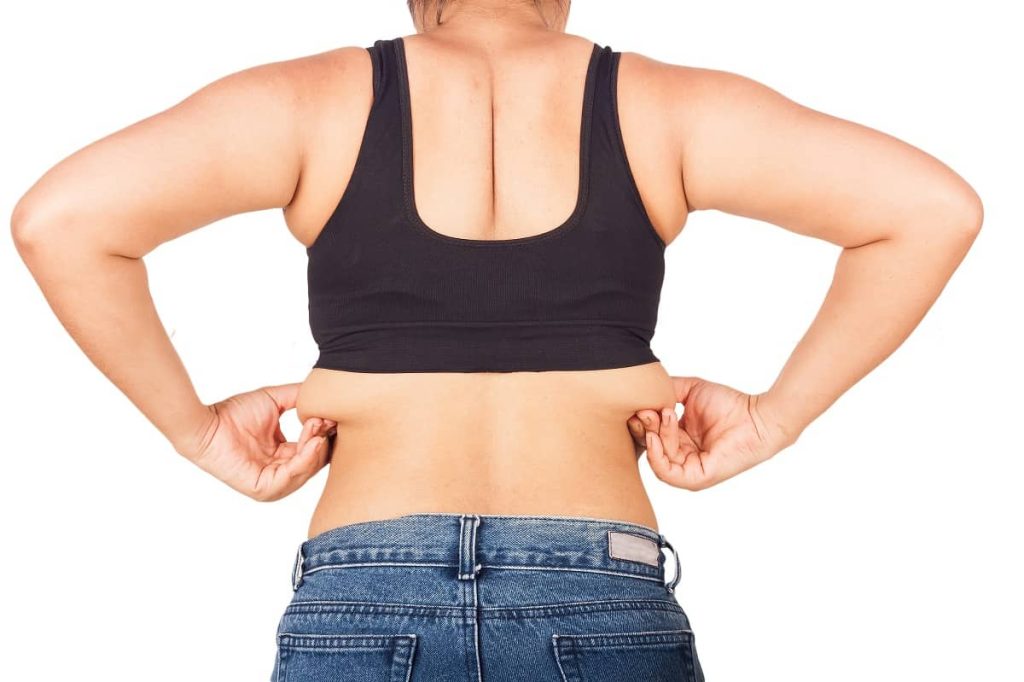Back roll reduction with lipo is gaining traction in the world of body contouring. This procedure targets stubborn fat deposits that resist diet and exercise, particularly around the back. It offers a solution for those looking to enhance their silhouette, reduce fat roll and bra roll fat, and boost confidence with the best back fat lipo.
Historically, liposuction has evolved significantly since its inception in the late 20th century. Today, advanced techniques like back lipo allow for more precise fat removal with minimal downtime. Individuals seeking a sleeker appearance can benefit from this innovative approach. Understanding the process and its advantages is essential for anyone considering this option.
Key Takeaways
-
Understand the Procedure: Familiarize yourself with back liposuction to know what to expect during the back roll reduction process and how it can help eliminate excess fat.
-
Identify Causes: Recognize the common causes of excess back fat, such as genetics and lifestyle choices, to better address your specific situation.
-
Consider Benefits: Weigh the benefits of back roll reduction, including improved body contour and increased confidence, as these can motivate your decision.
-
Address Concerns: Review common concerns about the procedure and explore solutions, ensuring you have all the information needed to make an informed choice.
-
Plan for Recovery: Understand the recovery process and follow recommended guidelines to ensure a smooth healing experience after your procedure.
-
Explore Financial Options: Look into cost factors and financial options available for back fat removal, so you can budget effectively and find affordable solutions.
Understanding Back Liposuction
Targeting Stubborn Fat
Back liposuction specifically targets stubborn fat deposits in the midback and bra line areas. Many people struggle with excess fat in these regions, which can lead to discomfort and self-consciousness. The back liposuction procedure effectively removes this fat, resulting in a smoother, more contoured appearance.
Fat liposuction works by using a thin tube called a cannula. This tube is inserted through small incisions in the skin. The surgeon then suctioned out the unwanted fat. This technique is beneficial for those who have not seen results from diet and exercise alone.
Addressing Fibrous Tissue
Fibrous tissue plays a significant role in creating multiple rolls on the back. This tissue can make it difficult for traditional liposuction to achieve desired outcomes. The presence of fibrous tissue often leads to uneven contours after surgery.
Back lipo addresses this issue by breaking down the fibrous tissue during the procedure. Surgeons use advanced techniques to ensure effective fat removal while minimizing damage to surrounding tissues. This method helps patients achieve smoother results and enhances overall satisfaction with fat liposuction results.
Advancements in Techniques
Recent advancements have improved patient positioning and incision techniques for back liposuction procedures. Proper positioning allows surgeons to access hard-to-reach areas more easily. It also helps improve visibility during the procedure.
Surgeons now use smaller incisions, leading to less scarring and quicker recovery times. Smartlipo is one such advancement that uses laser technology to assist in fat removal. This method melts the fat before suctioning, making it easier to extract.
Recovery Process
Liposuction recovery varies among patients but generally involves some swelling and bruising. Most individuals can return to normal activities within a week or two after their back liposuction procedure. Following post-operative care instructions is crucial for optimal healing.
Patients may experience some discomfort during recovery, which can be managed with prescribed medication. Regular follow-up appointments help monitor progress and address any concerns that may arise.
Causes of Excess Back Fat
Genetic Factors
Genetics plays a significant role in excessive back fat accumulation. Some people are genetically predisposed to store fat in specific areas, including the back. This can lead to unwanted back fat that is difficult to eliminate through diet and exercise alone. Family history often influences where fat deposits form. If relatives have similar fat distribution patterns, individuals may also experience stubborn back fat.
Lifestyle Choices
Lifestyle choices greatly affect fat development in the back area. Poor dietary habits contribute to fat accumulation. High-calorie diets rich in sugars and unhealthy fats can lead to weight gain. Lack of physical activity also promotes fat storage. Sedentary lifestyles result in reduced calorie expenditure, allowing excess calories to turn into fat deposits.
Regular exercise is crucial for managing body weight. Cardio workouts help burn calories and reduce overall body fat. Strength training builds muscle, which can improve metabolism. A balanced diet combined with regular exercise helps combat fat bulges and maintain a healthy weight.
Hormonal Changes
Hormones significantly influence fat storage patterns. Fluctuations in hormone levels can lead to increased fat formation in the back area. For example, cortisol, known as the stress hormone, can promote fat retention when levels are high over time. Women may experience hormonal changes during menstruation or menopause, leading to increased fat cells in the back.
Thyroid hormones also regulate metabolism and energy use in the body. An underactive thyroid can slow down metabolism, leading to weight gain and fat persistence in various areas, including the back. Individuals experiencing sudden weight changes should consult a healthcare professional for evaluation.
Age-Related Changes
As people age, their bodies undergo changes that can affect fat distribution. Muscle mass typically decreases with age, leading to a slower metabolism. This change can cause more fat layers to develop if dietary habits remain unchanged.
Older adults may find it harder to lose excess back fat due to these metabolic shifts. Maintaining an active lifestyle becomes even more important as one ages. Engaging in regular physical activity helps preserve muscle mass and manage weight effectively.
Emotional Factors
Emotional factors can also contribute to unwanted back fat. Stress eating often leads to consuming high-calorie comfort foods, resulting in fat returns over time. Psychological well-being affects motivation for exercise and healthy eating.
In summary, understanding the causes of excess back fat is essential for effective management strategies. Genetic predisposition, lifestyle choices, hormonal changes, age-related factors, and emotional influences all play a part in this issue.
Benefits of Back Roll Reduction
Improved Contour
Back roll reduction significantly enhances body contour. The procedure targets roll fat that often disrupts the natural silhouette. Patients notice a more streamlined appearance after treatment. This change can lead to a better fit in clothing. Many find that their favorite outfits look more flattering without the unwanted rolls.
The procedure removes excess fat from the back area, creating smoother lines. A well-defined back can improve overall aesthetics. This improvement is not just about looks; it also affects how individuals feel about themselves.
Boosted Confidence
Self-confidence often improves after back roll reduction. Many people struggle with self-image due to unwanted rolls. After the procedure, patients frequently report feeling more comfortable in their skin. They express joy in wearing fitted clothes they previously avoided.
Feeling good about one’s body can enhance various life aspects. Social interactions may become easier and more enjoyable. Increased confidence may lead to trying new activities or hobbies without fear of judgment.
Long-lasting Results
Results from back roll reduction can be long-lasting when paired with a healthy lifestyle. Regular exercise and balanced nutrition play vital roles in maintaining results. Patients who commit to these habits often retain their improved silhouette for years.
Fat cells removed during the procedure do not return. However, weight gain can still affect remaining fat cells. Staying active and eating well helps prevent new rolls from forming. Regular physical activity strengthens muscles and promotes overall health.
Emotional Well-being
Back roll reduction also contributes to emotional well-being. Many individuals experience stress related to body image issues. Eliminating back rolls can alleviate this stress. Patients often report feeling lighter and freer after treatment.
This positive change can lead to better mental health outcomes. Feeling satisfied with one’s appearance boosts mood and reduces anxiety levels.
Clothing Choices
With reduced back rolls, clothing choices expand significantly. Individuals may explore styles they once deemed unflattering. Fitted tops and dresses become options instead of sources of frustration.
Shopping becomes less daunting when one feels confident in their body. Wearing clothes that highlight a new shape adds excitement to personal style.
Common Concerns and Solutions
Scarring Issues
Patients often worry about scarring after back roll reduction with lipo. Scars may form in the treated areas, particularly around the bra line or sides. Surgeons typically use small incisions to minimize this risk.
To reduce visibility, patients should follow post-operative care instructions closely. Keeping the incisions clean and applying recommended ointments can help. Some doctors suggest silicone sheets or gels to improve scar appearance over time.
Pain Management
Pain management is a common concern during and after the procedure. Local anesthesia usually helps during surgery. This numbs the area, making the treatment more comfortable.
After surgery, some discomfort is normal. Doctors often prescribe pain relief medications for this reason. Over-the-counter options like ibuprofen can also be effective. Patients should discuss their pain levels with their doctor to find the best management plan.
Skin Elasticity Expectations
Skin elasticity is another important factor to consider post-surgery. The back region may not bounce back as expected after fat removal. Each person’s skin reacts differently based on age and genetics.
Patients should manage expectations regarding how their skin will look after recovery. Loose skin may occur if there is significant fat removal or if skin elasticity is low. Discussing these concerns with a surgeon before the procedure can provide clarity.
Surgeons may recommend treatments like skin tightening procedures if needed later on. These can help improve skin appearance without additional invasive measures.
Recovery Timeline
Recovery from back roll reduction varies by individual. Most patients return to normal activities within a week or two. However, strenuous exercise should be avoided for at least four weeks.
During recovery, swelling is common in the treated areas. This can take several weeks to subside fully. Wearing compression garments as directed can aid in reducing swelling and supporting healing.
Long-term Care
Long-term care is essential for maintaining results after back roll reduction with lipo. A balanced diet and regular exercise help prevent fat from returning in the treated areas.
Regular follow-ups with the surgeon are also beneficial. These appointments allow for monitoring progress and addressing any concerns that arise.
Recovery Process Overview
Timeline Stages
A typical recovery timeline after back liposuction spans several weeks. Patients usually notice swelling and bruising within the first few days. This is normal and expected.
Most individuals return to light activities within a week. However, full recovery can take up to six weeks. During this time, the body heals and adjusts to its new shape. The final results may not be visible until three to six months post-procedure.
Post-Operative Care
Post-operative care plays a crucial role in recovery. Compression garments are essential. They help reduce swelling and support the treated area. Patients should wear these garments for at least four to six weeks.
Activity restrictions are also important. Strenuous exercises and heavy lifting should be avoided for at least three weeks. Light walking is encouraged to improve circulation but should be done with caution.
Keeping the surgical site clean is vital. Follow your surgeon’s instructions on how to care for incisions. Using prescribed medications can help manage pain and prevent infection.
Follow-Up Appointments
Follow-up appointments are necessary for monitoring progress. These visits allow the surgeon to check healing and assess results. Regular check-ins ensure that any concerns are addressed promptly.
Patients should attend all scheduled appointments. These visits help track recovery milestones and adjust care if needed. It’s an opportunity to discuss any issues or questions about the healing process.
Engaging in open communication with healthcare providers is crucial during recovery. It can lead to better outcomes and peace of mind.
Potential Risks to Consider
Possible Complications
Patients must be aware of potential complications from back roll reduction with liposuction. Infection is one risk that can occur at the incision sites. Proper hygiene and care reduce this risk. Some patients may experience asymmetry after the procedure. This happens when fat removal is not uniform on both sides. Contour irregularities can also arise, leading to an uneven appearance. These issues can affect a patient’s confidence and satisfaction with their body.
Choosing a Qualified Surgeon
The choice of surgeon plays a crucial role in the outcome of the procedure. Selecting a qualified and experienced surgeon is essential for minimizing risks. Surgeons should have proper credentials and a track record of successful surgeries. They must understand patient positioning during the procedure to ensure safety and effectiveness. Discussing past patient experiences can provide insight into their skill level. A good surgeon will also explain the process clearly, including the use of anesthesia and how incisions are made.

Managing Expectations
Realistic expectations are vital for patient satisfaction after surgery. Many patients hope for dramatic changes but should remember that results vary. Understanding that some swelling and bruising will occur post-operation can help manage these expectations. Patients should discuss their goals with their surgeon ahead of time. This conversation helps align expectations with what is realistically achievable through liposuction.
Surgeons often recommend maintaining a healthy lifestyle post-surgery for lasting results. Patients need to commit to exercise and a balanced diet to see improvements over time. This commitment ensures that results remain positive and enhances overall satisfaction.
Cost Factors and Financial Options
Surgeon Fees
Surgeon fees play a significant role in the overall cost of back roll reduction with liposuction. These fees can vary based on the surgeon’s experience and reputation. A highly skilled surgeon may charge more, but they often provide better results. Costs typically range from $2,000 to $10,000 depending on these factors.
Facility Charges
Facility charges also contribute to the total expense. This includes costs for the operating room, anesthesia, and recovery area. An accredited surgical facility may charge higher rates than a standard clinic. Patients should expect facility fees to add $1,000 to $3,000 to their bill.
Additional Expenses
Other expenses can include pre-operative tests, post-operative care, and medications. These costs can accumulate quickly. Patients should consider these factors when budgeting for surgery.
Financing Options
Financing options are available for those who need assistance covering the costs. Many clinics offer payment plans that allow patients to pay over time. This can make surgery more affordable for individuals without immediate funds.
Medical loans are another option. These loans provide financing specifically for medical procedures like liposuction. They often have lower interest rates compared to personal loans. Researching different lenders can help patients find the best deal.
Consultation Benefits
Consultation with clinics is crucial for understanding personalized cost estimates. During a consultation, patients can discuss their specific needs and get an accurate quote. Clinics may provide a breakdown of all potential expenses involved in the procedure.
Patients should ask about any hidden fees during this meeting. Understanding all aspects of the financial commitment is essential before proceeding.
Time Considerations
Time is also a factor in planning for back roll reduction with liposuction. The entire process includes pre-operative consultations, the procedure itself, and recovery time. Recovery typically takes one to two weeks, during which patients should plan for limited activity.
Scheduling follow-up appointments is important too. These visits ensure proper healing and check on results.
In summary, understanding the cost factors associated with back roll reduction through liposuction helps patients prepare financially. By considering surgeon fees, facility charges, additional expenses, financing options, and consultation benefits, individuals can make informed decisions.
Affordable Back Fat Removal Tips
Non-Surgical Options
Diet modifications can play a crucial role in back fat removal. Eating a balanced diet helps reduce overall body fat. Focus on lean proteins, whole grains, and plenty of fruits and vegetables. Avoid sugary drinks and processed foods. These changes can lead to noticeable improvements in the bra line region.
Targeted exercises also help tone the back area. Strength training can build muscle and improve appearance. Exercises like rows, push-ups, and planks target back muscles effectively. Regular cardio workouts burn calories and contribute to fat loss. Combining these methods can enhance results without surgery.
Less Invasive Procedures
Laser therapy offers a less invasive option for fat reduction techniques. This procedure uses laser energy to break down fat cells. It requires minimal downtime compared to traditional back fat removal surgery. Many patients find it effective for small areas of stubborn fat.
CoolSculpting is another popular choice. This technique freezes fat cells, which are then naturally eliminated by the body. Results appear gradually over several weeks. Both options provide alternatives to more invasive fat surgery.
Consult Multiple Professionals
Seeking multiple consultations is essential before making decisions about fat removal modalities. Different clinics may offer varying prices and procedures. Patients should ask about all available options for back fat patients.
Comparing costs helps identify affordable solutions. Some clinics offer financing plans, making treatments more accessible. Understanding the pros and cons of each option ensures informed choices.
Cierre de pensamientos
Back roll reduction through liposuction can transform your confidence. Understanding the procedure, its benefits, and potential risks is crucial. You now have the knowledge to make informed decisions about your body.
Consider all financial options and recovery processes before diving in. Affordable tips for back fat removal can help you on this journey. Embrace the change and take action today. Your ideal silhouette is within reach. Don’t wait—explore your options and start your transformation now!
Frequently Asked Questions
What is back roll reduction with lipo?
Back roll reduction with lipo is a cosmetic procedure that removes excess fat from the back using liposuction techniques. This helps contour the area, improving overall body shape and boosting confidence.
Who is a good candidate for back liposuction?
Ideal candidates are individuals struggling with stubborn back fat despite diet and exercise. Good skin elasticity and overall health are also important factors for successful results.
How long does the recovery process take?
Recovery typically takes about one to two weeks. Most patients can resume normal activities within a few days but should avoid strenuous exercise for at least two weeks.
Are there any risks associated with back liposuction?
Yes, potential risks include infection, scarring, and asymmetry. Choosing a qualified surgeon minimizes these risks significantly.
What are the costs involved in back roll reduction?
Costs vary based on location, surgeon expertise, and facility fees. On average, expect to pay between $3,000 to $8,000 for the procedure.
Can I finance my back liposuction procedure?
Many clinics offer financing options or payment plans. It’s advisable to inquire during your consultation to explore financial solutions that fit your budget.
What are some affordable alternatives to liposuction for back fat removal?
Alternatives include non-surgical treatments like CoolSculpting or radiofrequency therapy. These options may be less invasive but typically require multiple sessions for desired results.





